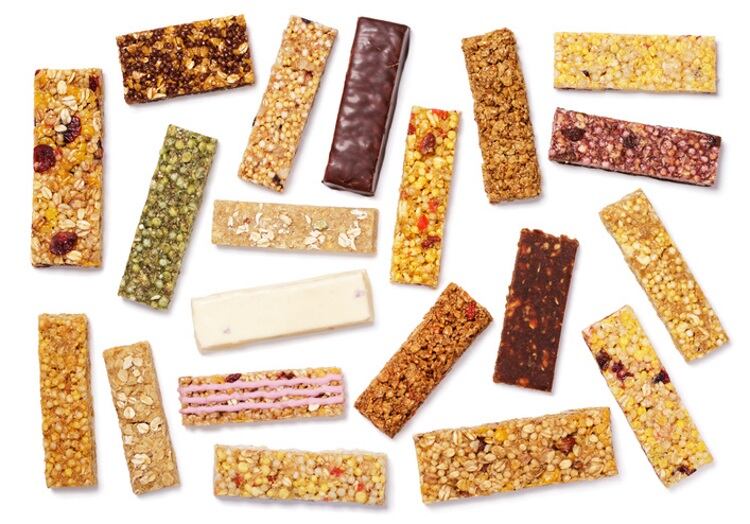Snacking has become a global phenomenon: as on-the-go lifestyles evolve, people are grabbing snacks here and there to fulfil their needs in between meals or as a replacement. As a result, the global healthy snack market is expected to reach $32.8bn by 2025.
A key purchasing driver today is additional protein – the building blocks of life that provide energy, helping to develop and maintain muscle, assisting growth and regulating organs.
Consumers are seeking more convenient ways to add this vital macronutrient to their diet and consequently, snack manufacturers are looking for new ways to integrate it into their products to differentiate them from the competition.
One way to do this is through nutritional snack bars.
Evolving demands
Europe is the most active bar market in the world, with the most new product launches recorded between 2013 and 2017.
Healthy snacking, in particular, is a growing area, seeing an impressive 22% CAGR between 2013 and 2017 in launch claims for ‘healthy snacking bar’.
Many of these bars are a more traditional take on the healthy snacking idea, with granola and muesli bars being the fastest growing type of bar category (estimated at 36% of the EMEA market in 2017).
However, there is a great amount of diversity in what products are hitting the shelves.
With consumers interested in products that address specific health concerns, manufacturers are having to diversify their healthy snack offerings and move away from the ‘one size fits all’ options.
These can include a nutritious snack developed for heart health, weight management, and bone and joint health. The rewards of protein, for example, include benefiting from muscle recovery, satiety and age-related muscle maintenance.
Manufacturers are also differentiating their bars with a wider range of ingredients such as seeds, grains, nutritional ingredients and vitamins and minerals.
Simple ingredients
Consumers want simple, healthy ingredients they recognise.
They have become sceptical of long ingredient lists, especially products sporting multiple health claims. However, claims such as clean label and free-from continue to be important for consumers who seek authenticity, simpler ingredient lists and no artificial preservatives, flavours and colours.
Clean label is also linked to transparency and customers want to know more about the brand behind the products, including its sustainability, pesticides and fair business practices.
This trend is growing in importance as consumers become increasingly conscious about the environment and ethical business practices.
Preference for plant-based
Consumers are also increasingly turning to plant-based ingredients for their protein.
In fact, the plant-based food market is expected to reach $5.2bn worldwide by 2020, particularly driven by plant-based snacks. The number of bar launches in this category increased by 34.9% between 2013 and 2017.
Ingredients like peas, beans, chickpeas, lentils, rice, wheat and soy are helping to meet that demand, while also tend to be lower in calories and fat, and higher in fibre and essential nutrients.
Pea protein, in particular, is rising in popularity and Glanbia Nutritional’s HarvestPro Pea Protein gives consumers the opportunity to enjoy a complete protein in a sustainable and allergen-free way.
HarvestPro Pea protein also not only benefits the nutritional profile of a snack bar, it delivers good flavour and texture, which many manufacturers struggle with due to pea protein’s natural bitter aftertaste and poor texture.
Grains and seeds also dominate this sector, with ancient grains – like spelt, Khorasan wheat (Kamut), freekeh, bulgur and farro – increasingly in demand as consumers perceive them to be more nutritional and flavourful.
Glanbia’s HarvestPro Chia and Flax proteins contain ALA omega-3 and provide an excellent source of fibre. The addition of finely milled ancient grains and seeds to a bar ensures consumers can enjoy a satisfying texture and strong nutritional profile.
Maintaining functionality
One of the most challenging aspects of creating an indulgent healthy snack is that of sensory experience. Taste, texture and flavour change if the quality and functionality of the protein ingredients are not correct.
For example, a bar matrix with 100% commodity whey protein isolate (WPI) develops a hard texture over time – the result of water migrating away from the protein, disrupting the homogenous distribution of macronutrients.
Manufacturers are therefore looking for solutions that maintain the same distribution of macronutrients to reduce bar hardness but still offer great taste and a satisfying texture.
Glanbia’s BarPro and BarFlex enable manufacturers to tackle the unique challenges of including protein in confectionery style snack bars. BarFlex, in particular, enables a soft, chewy texture, while maintaining a long shelf life.


